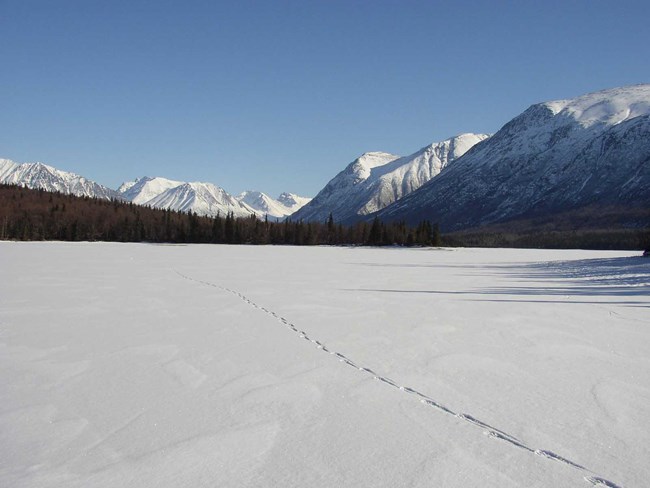
Processes such as snowpack accumulation and melt, lake ice formation and breakup, and vegetation growth and senescence are sensitive to climatic conditions and linked to many important ecological processes. For example, the timing of stream discharge is closely linked to snow-covered area of a catchment, snow depth, snow water equivalent, and snow season. Snowmelt dates also influence the timing of leaf-out, and both snowpack and green-up influence wildlife movement at the start of the growing season. Spatial variation in snow and growing season length is strongly influenced by gradients of latitude, elevation, and proximity to the ocean. Variation in lake ice affects lake temperatures and water levels, and largely controls human and wildlife travel routes over the course of the winter.
-
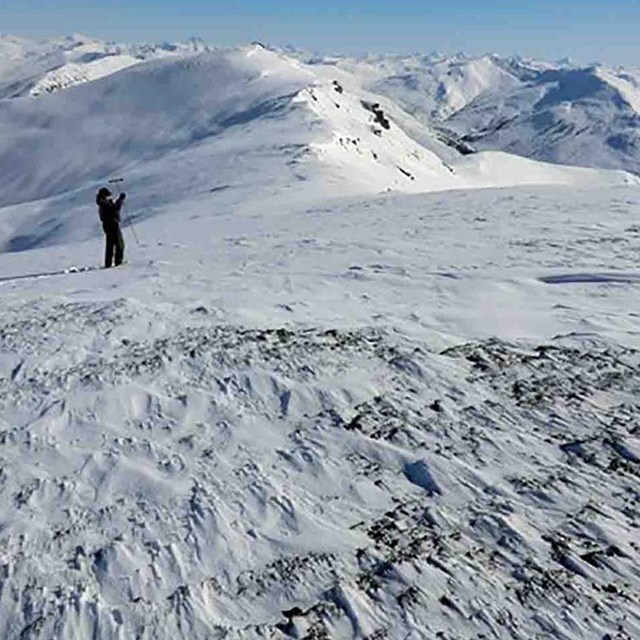 Arctic NetworkSnowpack
Arctic NetworkSnowpackSeasonal snow, river and lake ice, and long-term glacial ice are dominant ecosystem influences in Arctic parklands.
-
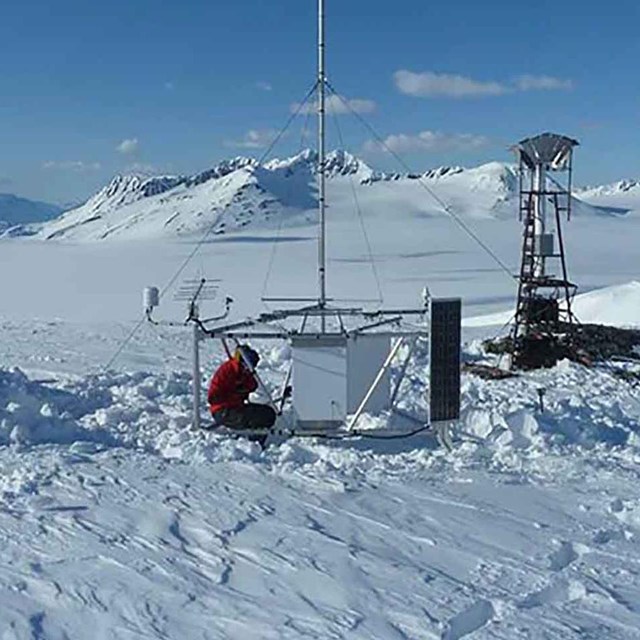 Central Alaska NetworkSnowpack
Central Alaska NetworkSnowpackSnowpack has a major influence on hydrology, vegetation, and faunal communities.
-
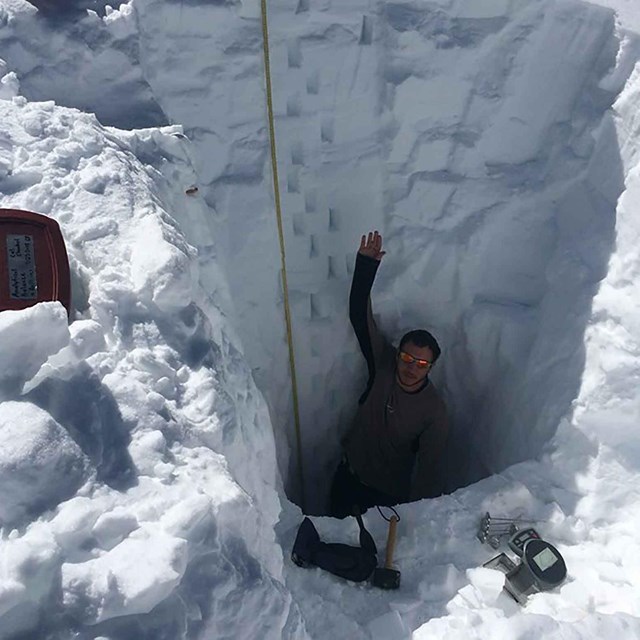 Rocky Mountain NetworkSnow Chemistry
Rocky Mountain NetworkSnow ChemistryAs snowpack accumulates during the winter, chemicals deposited from the atmosphere are stored until snowmelt begins in spring.
-
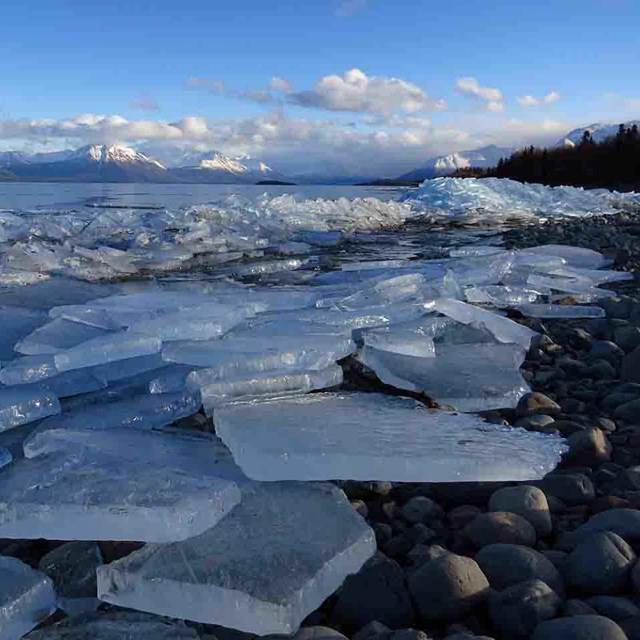 Southwest Alaska NetworkSeasonal Processes
Southwest Alaska NetworkSeasonal ProcessesWe monitor the patterns of freeze-up and break-up of lake ice of the major lakes in Southwest Alaska.
-
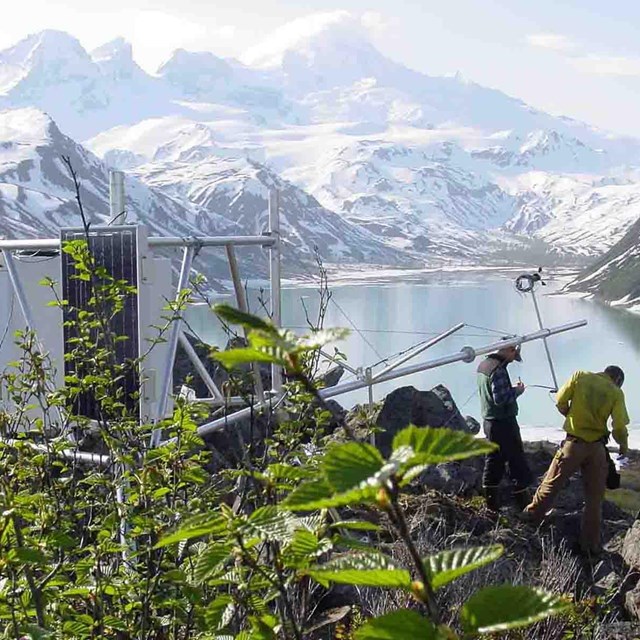 Southwest Alaska NetworkRain-on-snow
Southwest Alaska NetworkRain-on-snowWet snow and the icing that frequently follow wintertime rain-on-snow events affect high-latitude ecosystems in multiple ways.
Learn more about snow
Last updated: January 11, 2022
